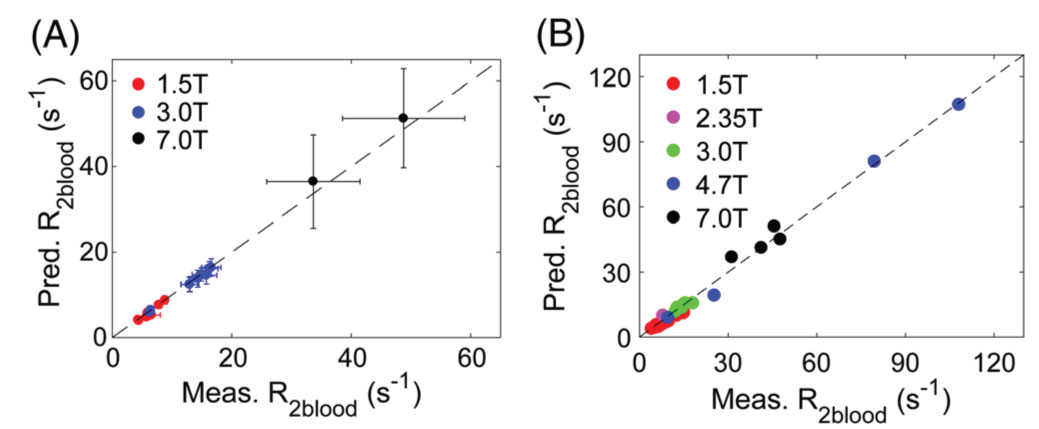For the physiological parameter quantification, it is sometimes necessary to know the blood water T2, T1, hematocrit (Hct) and oxygenation saturation fraction (Y). We have established theoretical models that can correctly predict blood water T1 and T2 for MRI field strengths ranging from 1.5 Tesla to 11.7 Tesla, when the Hct and Y are provided (See Figure and references 1-3). For T2 it is also needed to put in the MRI parameters used for the spin echo acquisition, because T2 depends on the type of echo experiment used. Alternatively, when T2 and T1 are measured (3,4), Y and Hct can be determined respectively using the calculator. Y can then be used to calculate oxygen extraction fraction (OEF) for the tissue involved. The calculator can be found at the below link.
https://godzilla.kennedykrieger.org/cgi-bin//bloodT2T1_cal.pl
The software source code for these T1, T2, Hct and oxygenation calculations is freely available from GitHub: https://github.com/CESTMAN/R2bloodcalculator
(1) Li W, Grgac K, Huang A, Yadav N, Qin Q, van Zijl PC. Quantitative theory for the longitudinal relaxation time of blood water. Magn Reson Med. 2016 Jul;76(1):270-81.
(2) Li W, van Zijl PCM. Quantitative theory for the transverse relaxation time of blood water. NMR in Biomedicine. 2020;33:e4207. Erratum: NMR in Biomedicine. 2020;33:e4329.
(3) Lu H, Xu F, Grgac K, Liu P, Qin Q, van Zijl P. Calibration and validation of TRUST MRI for the estimation of cerebral blood oxygenation. Magn Reson Med. 2012 Jan;67(1):42-9.
(4) Li W, Liu P, Lu H, Strouse JJ, van Zijl PCM, Qin Q. Fast measurement of blood T1 in the human carotid artery at 3T: Accuracy, precision, and reproducibility. Magn Reson Med. 2017 Jun;77(6):2296-2302.

Comparison of predicted CPMG-based R2blood values with literature values for in vivo human data (A) and in vitro human and bovine blood data (B). From Ref. 2, with permission.
